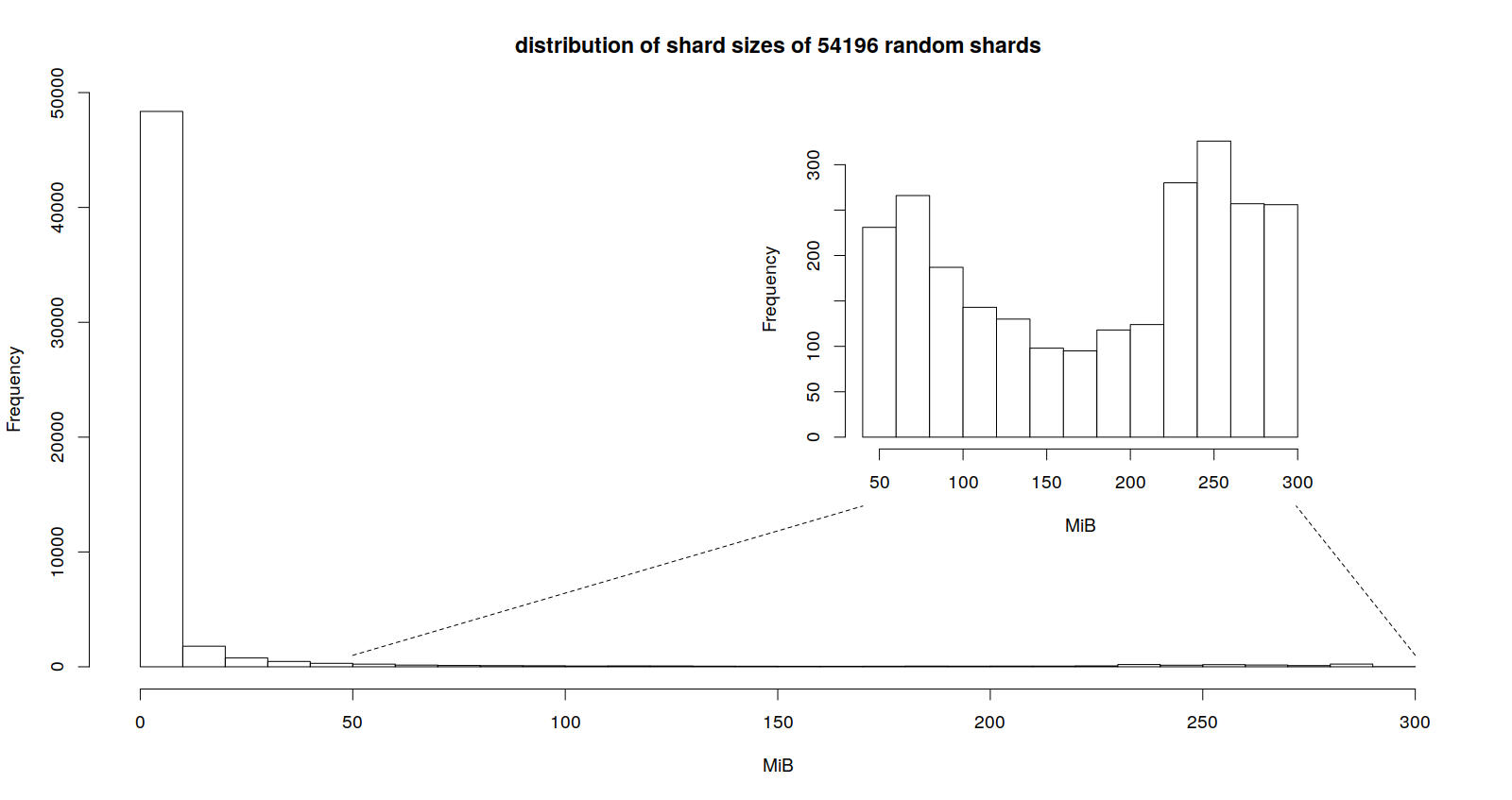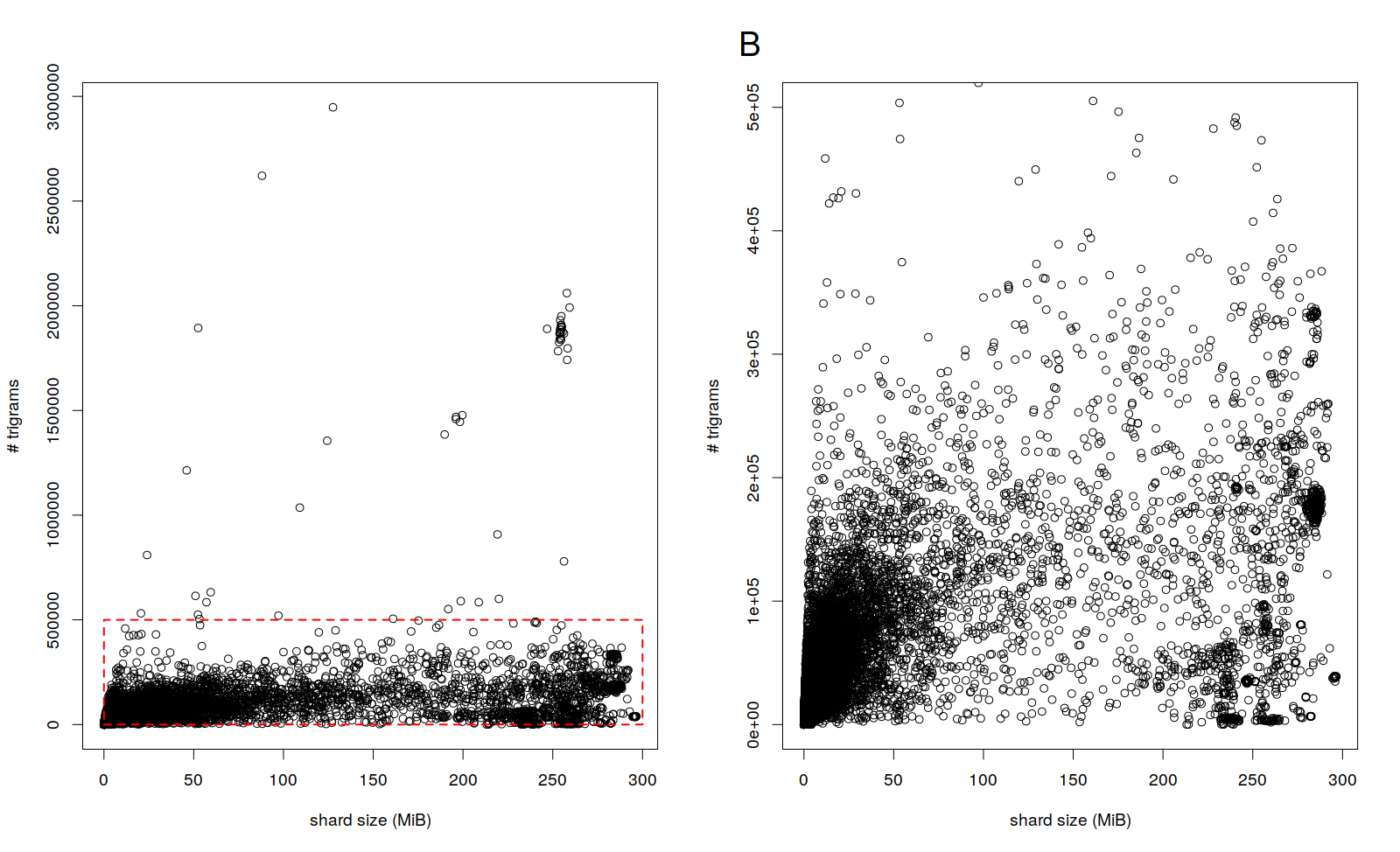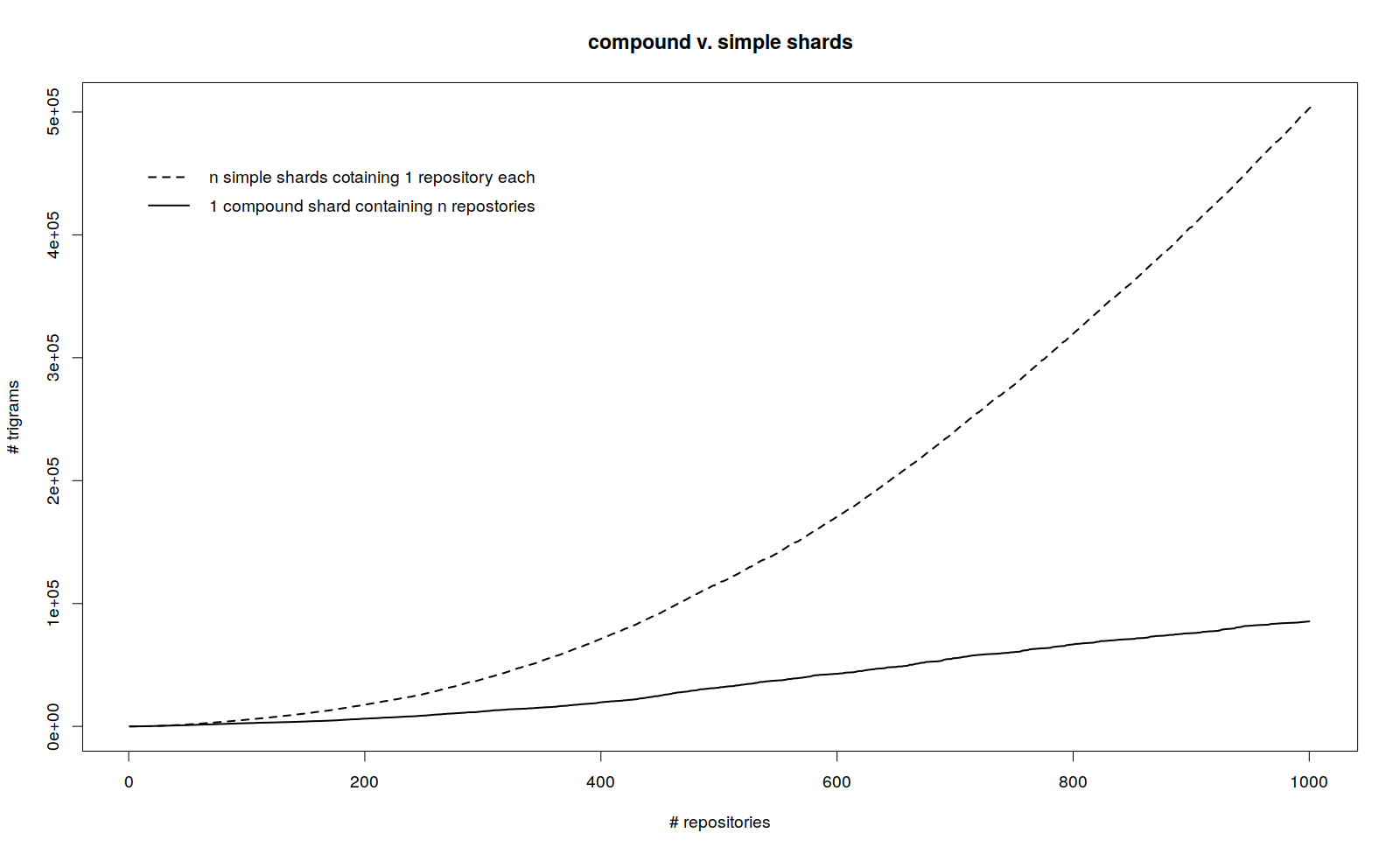Using shard merging to tackle the long tail of tiny and stale repos
Stefan Hengl

In this post we give you a brief overview of how we're tackling the long tail of tiny repositories by introducing shard merging to Zoekt, in our quest to index the OSS universe.
What is Zoekt?
Zoekt is a code search engine that performs trigram-based regex search. Originally created by Han-Wen Niehuys, Zoekt is fast, easy to deploy, and easy to maintain, which makes it a great choice for our self-hosted customer deployments. Sourcegraph is actually taking on maintainership of Zoekt, which you can read about here.
Why not just scale out?
Naturally, Zoekt's size of the index scales with the size of the input data. Zoekt’s index is about 2–3 times larger than the input data. Some of that data, like the trigrams, is kept in memory. At the scale of the open source universe, it quickly becomes too costly to just scale out. Luckily, Zoekt still has a lot of untapped potential when it comes to more efficient data structures. For example, in a previous post, Ryan Hitchman explained how we changed one of Zoekt's core data structures to reduce memory by 5x.
The core idea of this project is to merge the long tail of small, stale repositories into more efficient representations on disk and in memory. To understand the motivation behind this idea we have to first dive into Zoekt's data model.
Zoekt’s data model
Zoekt indexes repositories and stores the index in one or more files on disk. A repository contains a hierarchy of documents, such as source code, binaries, text files and so forth. At index time documents are added, one at a time, to the index builder. Once we cross a threshold of input data, currently configured to be 100 MiB, the builder flushes the index to a file on disk. This file is called a shard. For small repositories, there is a 1:1 relationship between the repository and its shard. Larger repositories, such as Kubernetes or the Linux Kernel map to several shards. At query time, shards are treated independently.
The long tail
Most repositories are tiny and fit within a single shard. The following histogram shows the distribution of shard sizes on one of our production instances.

75% of the shards in our sample are smaller than 2.1 MiB. Each shard contains, among other data, the trigrams we created during indexing. On startup, Zoekt loads those trigrams into memory. Trigrams for content and file names make up more than 70% of the heap of Zoekt’s web server. The more unique trigrams a shard has, the more costly its in-memory representation is.
The two charts below show the number of trigrams in a shard vs. the shard's size. Plot A shows that most shards have less than 500k trigrams. Plot B shows a subset of the data in A (red box).

We can see that even tiny shards can have a lot of trigrams. As is to be expected, there is a positive correlation (the spearman correlation is 0.94) but the slope is very small. Effectively, we are paying a premium for small shards as they take up a lot of memory per byte of input data.
The key insight is that there is a non-zero overlap between sets of trigrams from different shards. This presents a huge opportunity to save memory by merging small shards into much larger compound shards. Although the median intersection-over-union of two random shards in our sample is small (0.13), the overlap between a compound shard and another shard grows with every shard we merge. In other words, the larger a compound is, the cheaper it is, in terms of memory, to merge it with a another shard.
By merging several smaller shards, we are trading a smaller memory footprint for a potentially higher latency during search. We can fine-tune this trade-off with merge policies, for example by adjusting the target size of the compound shard and excluding some repositories from merging based on characteristics such as update frequency, rank, and repository size. An obvious first choice is to merge those shards that are small, rarely accessed and rarely updated.
The following diagram shows how the number of trigrams in a shard changes depending on how many repositories we merge into a compound shard.

The distance between the two curves is a measure of the compression we can achieve.
What’s next?
We are currently working on adding support for compound shards to Zoekt. First experiments indicate that we can expect an overall reduction in memory of about 50% for a target compound shard size of 2 GiB. We will make sure to follow up with a blog post and the final numbers once the project concludes.